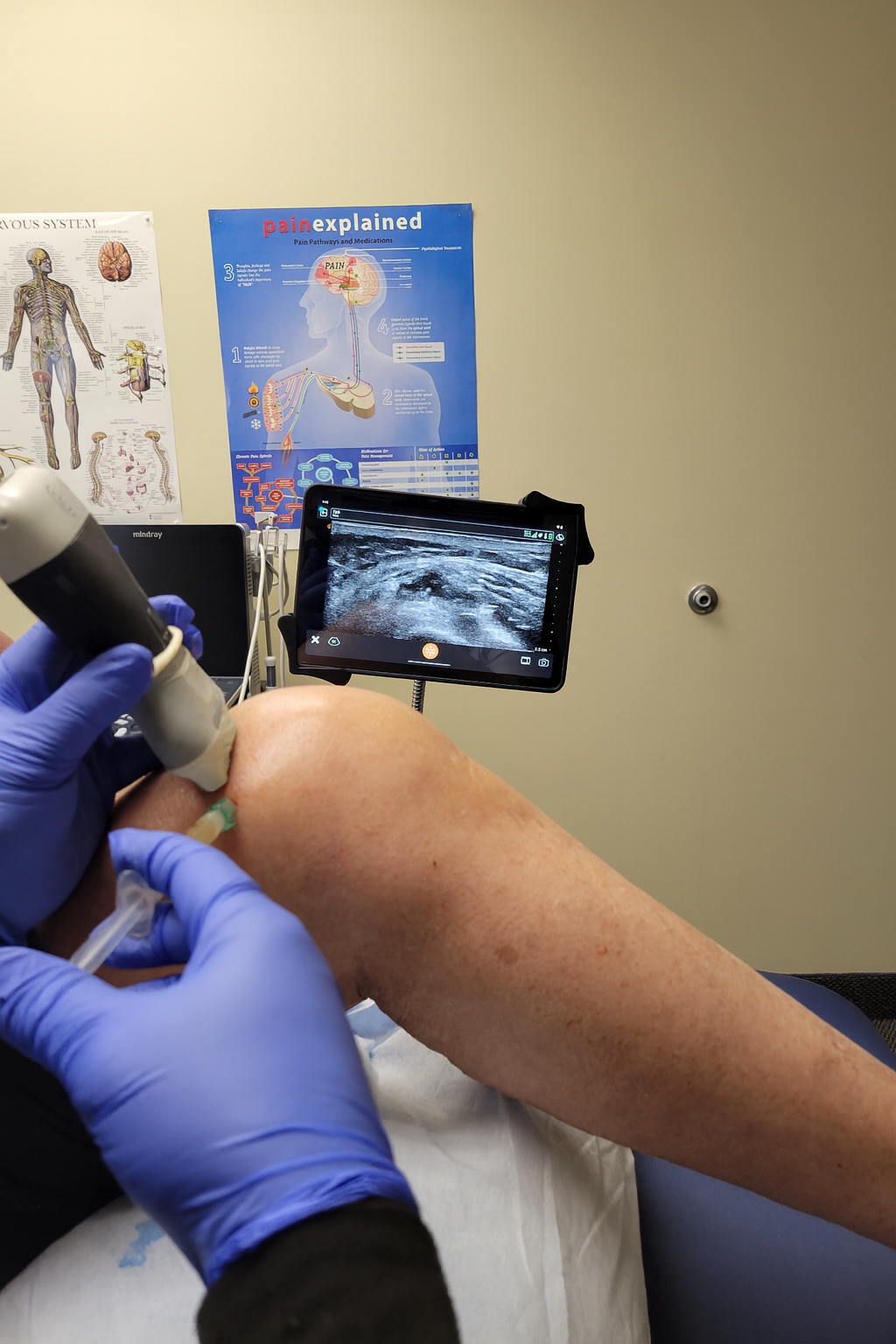
Platelet-Rich Plasma (PRP) injections have rapidly gained attention in the medical world as a groundbreaking, minimally invasive solution for musculoskeletal pain. By leveraging the body's own healing mechanisms, PRP therapy presents a natural, regenerative treatment option for conditions such as tendonitis, arthritis, ligament injuries, and sports-related trauma.
But while PRP itself is a powerful tool, one factor often overlooked in discussions is how critical ultrasound guidance is in ensuring the accuracy and effectiveness of these injections.
PRP injections use a patient’s own blood, processed to concentrate the platelets and growth factors that play a vital role in tissue repair. Once injected into the site of injury, PRP can reduce inflammation, stimulate cell regeneration, and support long-term healing.
Conditions that commonly benefit from PRP include:
The effectiveness of a PRP injection heavily depends on accurate placement of the solution. Without imaging, there's a risk of injecting PRP into surrounding tissues rather than the precise site of injury. This can significantly diminish the treatment's efficacy.
One of the key advantages of PRP is its ability to accelerate the healing process. For athletes or active individuals, this means a quicker return to sport or physical activity with less reliance on medications or invasive surgeries.
Emerging clinical evidence continues to validate PRP as a reliable therapy for musculoskeletal conditions:
PRP therapy represents a safe, natural, and effective option for those seeking pain relief and healing from musculoskeletal conditions. But to unlock its full potential, the use of ultrasound guidance is essential.
Whether you're an athlete dealing with repetitive strain or someone suffering from arthritis, PRP injections—when performed with ultrasound precision—can dramatically enhance recovery, function, and quality of life.
© SonoVital MSK Pain Clinic – Amherst, NS